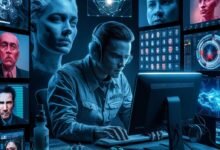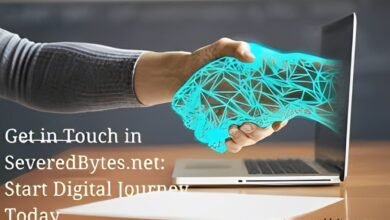Examining the Risks of Deepfake Video Calls in Digital Security

As deepfake technology advances, the potential for its misuse continues to rise. Deepfake video calls, in particular, present serious risks to digital security. By altering audio and video to produce convincing yet fake interactions, cybercriminals can mislead both individuals and organizations. In this article, we will delve into the impact of deepfake video calls on digital security, investigate the technology that powers them, and discuss strategies for detecting and mitigating these threats.
Rise of Deepfake Video Calls in Digital Scams
With the rise of deepfake technology, cybercriminals are discovering new avenues for exploitation. One notable trend is the use of deepfake videos calls for fraud or phishing schemes. Unlike traditional scams that rely on emails or text messages to mislead victims, deepfake video calls feature fabricated video interactions, making it harder for individuals to realize they are being deceived.
The capability to impersonate someone in real time adds a concerning level of authenticity to these scams. Whether it involves a bogus business deal, a deceitful request for sensitive information, or an imposter pretending to be a distressed family member, deepfake video calls can effectively manipulate victims’ emotions and trust. Organizations need to stay alert and understand that this type of deepfake technology is not merely a future concern but a current threat.
How Deepfake Technology Powers Deceptive Video Calls
At the heart of deepfake video calls is sophisticated deepfake technology that enables the real-time generation of highly convincing synthetic videos. This technology leverages artificial intelligence (AI) to imitate a person’s voice, facial expressions, and movements, creating a virtual persona that closely resembles someone else. With advancements in machine learning, these algorithms have significantly improved, making it harder to tell fake video calls apart from real ones.
Deepfake technology relies on a collection of video footage and images of the target individual, which is then altered to create a video call that looks genuine. As long as attackers can access publicly available visual and audio data, they have the potential to mislead their victims through deepfake video calls. This development is particularly concerning as it can affect individuals who depend on remote communication, including business professionals and everyday people.
Deepfake Video Calls—Challenge for Digital Security
Deepfake video calls pose serious challenges to digital security. Conventional security measures like passwords, two-factor authentication, and biometric verification might not suffice to stop deepfake impersonation. Cybercriminals can easily circumvent these protections by persuading individuals to disclose sensitive information or transfer money under the false impression that they are speaking with a trusted contact.
These threats underscore the urgent need for improved deepfake detection and authentication techniques. Both companies and individuals must adapt their security approaches to address the risks associated with deepfake video calls. This could involve implementing additional layers of identity verification, such as behavioral biometrics, which are more difficult to replicate using deepfake technology.
Effective Deepfake Detection Techniques for Video Calls
Identifying a deepfake video call requires keen observation and the use of sophisticated deepfake detection technology. One common sign of a deepfake video call is unnatural facial movements or voice modulation, as current AI technologies still struggle to perfectly replicate every aspect of human communication. Additionally, deepfake video detection tools can analyze video data to identify inconsistencies that indicate manipulation.
There are also emerging online solutions dedicated to deepfake detection. These platforms use AI-powered algorithms to detect irregularities in audio-visual content. By integrating such tools into video conferencing software, organizations can better protect themselves from the growing threat of deepfake video calls. However, detecting deepfakes in real-time remains a challenge, and the need for continuous improvement in detection methods is critical.
Deepfake Video Call Scams Targeting Businesses
Businesses are particularly vulnerable to deepfake video call scams because of the significant risks associated with financial transactions and decision-making. Cybercriminals frequently impersonate executives or business partners during these deepfake video calls, trying to persuade employees to authorize fraudulent transactions or disclose confidential information. These scams, referred to as Business Email Compromise (BEC) attacks, have now advanced to incorporate deepfake video and audio, increasing their threat level.
To combat this issue, business leaders need to inform their employees about the dangers of deepfake video calls and establish stricter internal protocols for verifying high-stakes transactions. Implementing multi-layered authentication, cross-referencing communications through various channels, and restricting access to sensitive data are crucial steps that businesses can take to protect themselves against deepfake scams. Raising awareness and taking proactive measures are vital in addressing this growing threat.
Future of Deepfake Detection and Mitigation Strategies
As deepfake video call technology advances, the future of digital security will hinge on creating effective deepfake detection systems and strategies to counteract them. Governments and tech companies are actively pursuing solutions, such as regulations to hold offenders accountable and innovative AI tools designed to identify deepfakes in real-time.
Final Words
For individual users, it’s essential to understand deepfake technology and the risks it brings. People should be careful during video calls with strangers or when they receive unusual requests, particularly if sensitive information or financial transactions are involved. Keeping up with the latest online tools for detecting deepfakes can also help users stay ahead of potential cyber threats.
Deepfake video calls pose a serious risk to both individuals and businesses, threatening privacy, finances, and security. As this technology evolves, our defenses must evolve as well. By using deepfake detection methods, adopting stronger authentication measures, and increasing awareness, we can better safeguard ourselves against the threats posed by deepfake video calls in today’s digital landscape.
you may also read multiblogs.





